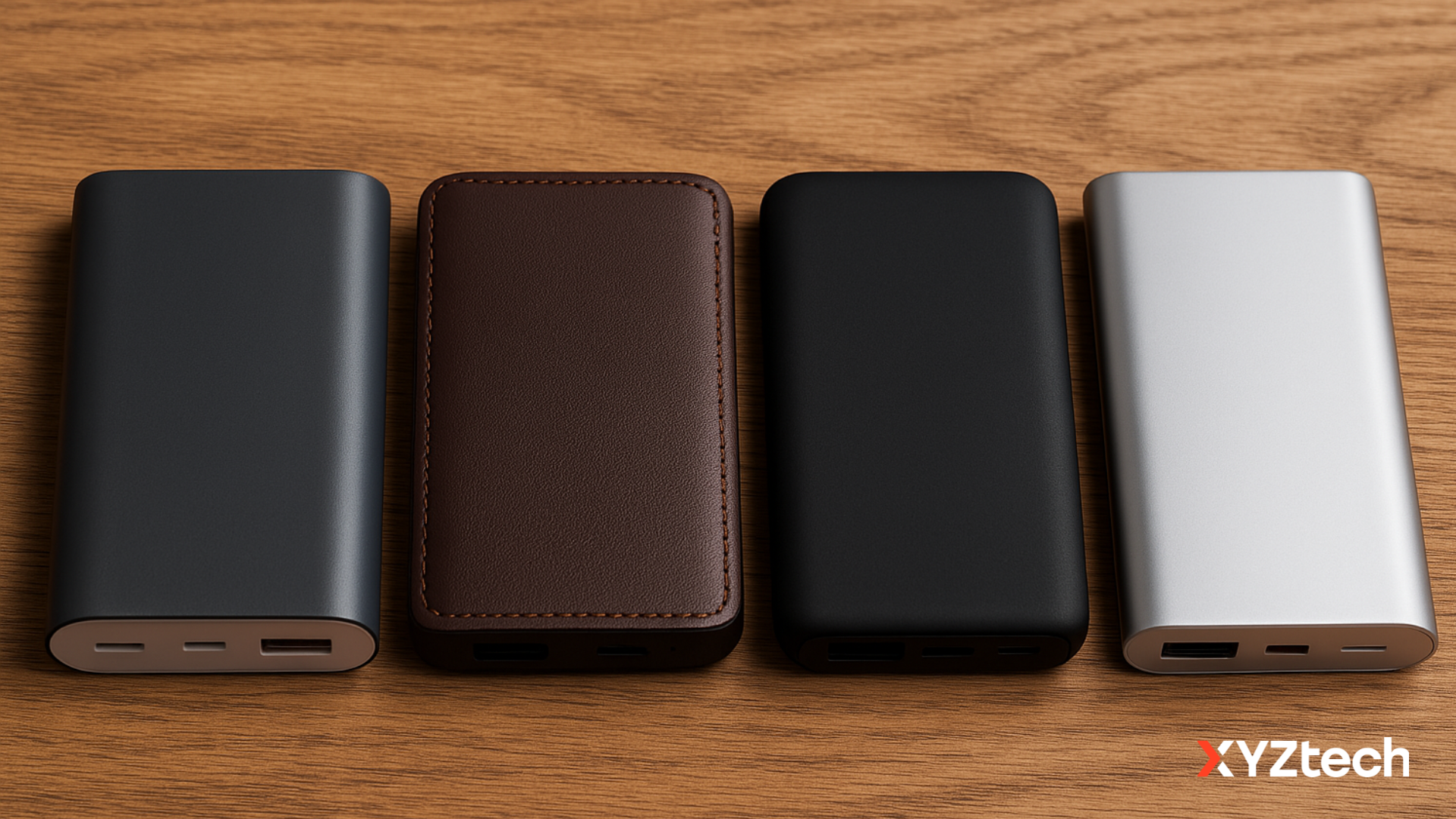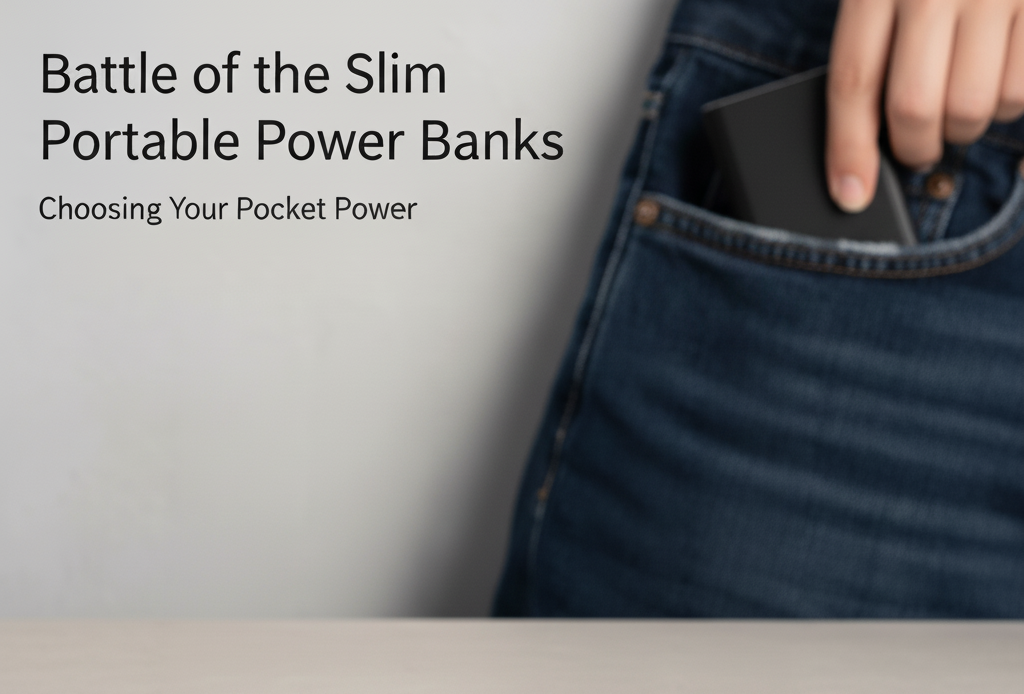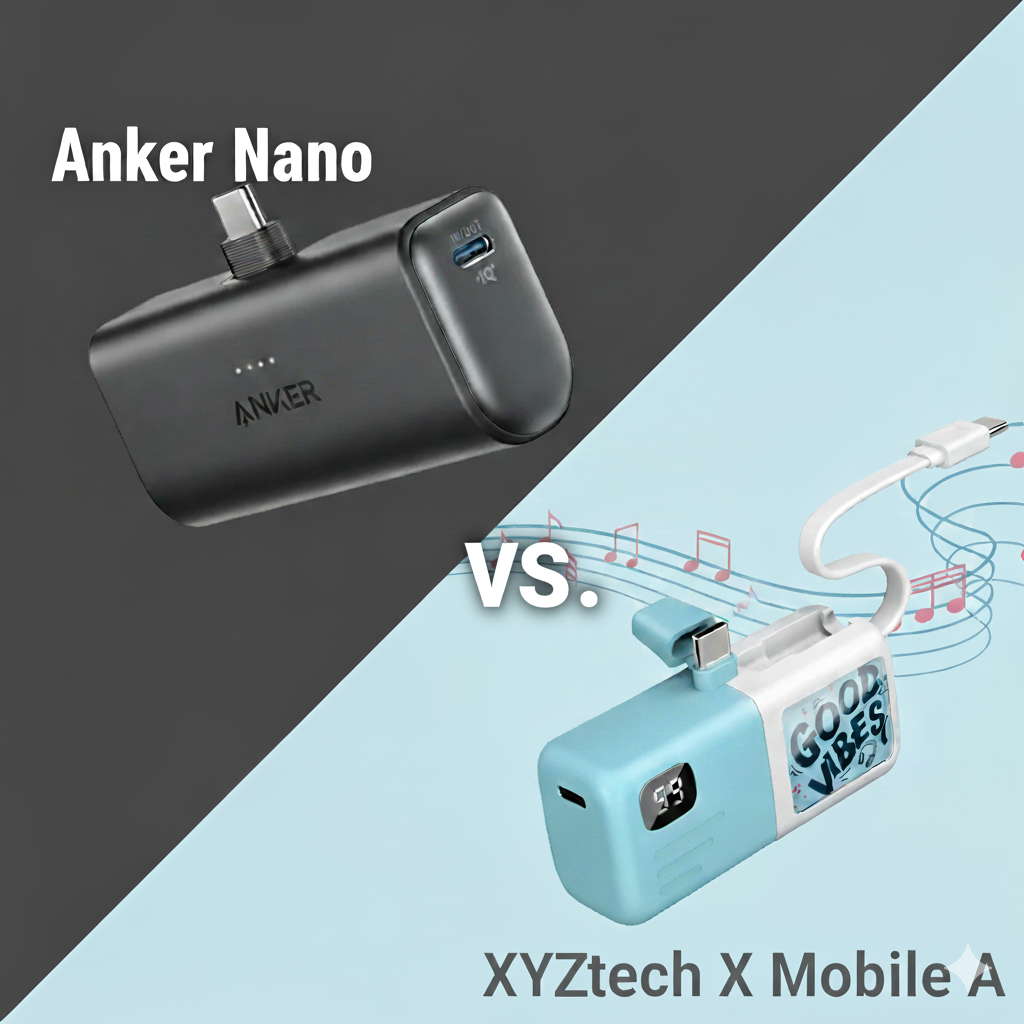Power Bank Casing Materials: What They Are & Why They Matter

When shopping for a power bank, most people focus on capacity and charging speed—but have you ever thought about what it's made of? The material and structure that encases the internal components (i.e., battery, circuitry, and ports) used in a power bank affects durability, heat management, weight, and even the way it feels in your hand.
So, whether you’re looking for something lightweight for travel, premium for style, or durable for everyday use, the right power bank casing makes all the difference. Let’s break down the options!
In this blog:
- Breaking Down Power Bank Casing Materials
- Beyond the Basics: What Else Should You Know?
- Choosing the Right Material for Different Lifestyles
- Maintenance Tips Based on Wireless Charger Casing Materials
- Final Thoughts: Does Power Bank Casing Material Matter?
Let’s get started!
Breaking Down Power Bank Casing Materials
The casing of your power bank can greatly influence its performance. Whether you prefer a sleek metallic finish or a soft-touch feel, the material used in the casing will affect things like durability, heat dissipation, and overall aesthetics. Let's dive into the different types of power bank casing and their pros and cons.
1. ABS Fireproof Plastic: Lightweight and Reliable
ABS (Acrylonitrile Butadiene Styrene) is a tough plastic known for its durability and fire resistance. It’s one of the most commonly used materials for power bank casings.
Perfect for: People who want a light, budget-friendly, and safe power bank.
2. PU Leather (Wireless Charging Pad): Stylish and Soft-Touch
PU (polyurethane) leather mimics real leather and is used mainly in wireless charging pads for its soft, non-slip surface.
Perfect for: Anyone who wants a stylish power bank with a soft-touch, non-slip grip.
3. Rubber Oil Finish Plastic: Smooth and Fingerprint-Resistant
This is a plastic shell with a rubberized coating, which gives it a soft, smooth touch while reducing the appearance of fingerprints.
Perfect for: People who want a sleek, comfortable power bank that resists fingerprints.
4. Aluminum Alloy: Premium, Durable, and Heat Efficient
The 6063 aluminum alloy is a lightweight yet durable material that offers excellent heat dissipation and durability.
Perfect for: Users seeking a long-lasting, heat-efficient, and high-end power bank.
|
Material Type |
Feature |
Pros |
Cons |
|---|---|---|---|
|
ABS Fireproof Plastic |
Lightweight |
Lightweight and easy to carry, Impact-resistant and fireproof, Affordable and reliable |
May scratch or yellow over time, Doesn’t feel as premium as metal |
|
PU Leather (Wireless Charging Pad) |
Grip & Feel |
Looks sleek and premium, Soft-touch, non-slip surface, Easy to clean |
Can wear out or peel over time, May trap heat, affecting wireless charging efficiency |
|
Rubber Oil Finish Plastic |
Grip & Feel |
Feels smooth and comfortable in hand, Reduces smudges and fingerprints, More premium feel than standard plastic |
The coating may wear off over time, Less impact-resistant than ABS plastic |
|
Aluminum Alloy |
Durability, Heat Dissipation, Scratch Resistance |
Superior heat dissipation prevents overheating, Durable and scratch-resistant, Premium metallic appearance |
Heavier than plastic alternatives, Temperature of the casing can vary with the environment |
Beyond the Basics: What Else Should You Know?
Here are some extra insights that can help you make a smarter choice.
-
Wireless Charger Casing Materials Environmental Impact
Eco-conscious consumers are increasingly interested in sustainable materials. ABS plastics, for example, are more easily recyclable, while some manufacturers are exploring biodegradable or eco-friendly power bank casing material.
-
Material and Heat Management
The wireless charger casing material significantly influences how heat is managed during charging. Materials like 6063 aluminum alloy are excellent at dissipating heat, preventing the power bank from overheating. This helps maintain battery performance and extends the life of the device.
-
Aesthetics and Design Flexibility
Power bank casing materials also affect its look and feel. PU leather and 6063 aluminum alloy can be customized with a variety of finishes, textures, and colors, making them ideal for consumers looking for a stylish device. Whether you prefer a sleek, metallic finish or a soft, leather-like texture, the material used helps shape the overall design and aesthetic of the power bank.
-
Impact of Material on Durability and Drop Resistance
The material of your power bank can also influence how well it stands up to accidental drops and daily wear and tear. Rubber oil finish plastic and PU leather provide shock-absorbing properties, helping the power bank withstand minor bumps and drops. If durability is key, an aluminum alloy casing offers robust protection but may be more prone to scratches.
-
Cost vs. Performance
Different materials come with different price points, and there is often a trade-off between cost and performance. For example, aluminum alloy is more expensive than ABS plastic, but it offers superior heat dissipation, durability, and a premium look and feel. Understanding this balance can help you make a more informed purchasing decision based on your budget and requirements.
-
Safety Standards and Certifications
When purchasing a power bank, it’s important to consider the certifications that ensure it meets safety standards. Look for certifications like UL2056, CE, and RoHS, which guarantee that the materials used are safe and the power bank has passed rigorous safety tests.
Choosing the Right Material for Different Lifestyles
Based on your lifestyle, certain wireless charger casing materials may be a better fit. Here are some suggestions to help you choose the best one for your needs.
- For Travelers: Lightweight materials like ABS plastic or PU leather (for a compact feel) are ideal.
- For Tech Enthusiasts: If performance and longevity matter most, 6063 aluminum alloy is the best option for superior heat management.
- For Fashion-Conscious Users: PU leather offers a premium look and feel, perfect for those who want their power bank to complement their style.
- For Active or Outdoorsy People: A power bank with a rubberized coating or aluminum alloy casing offers excellent drop resistance and durability.
Maintenance Tips Based on Wireless Charger Casing Materials
Proper care can help your power bank last longer:
- ABS Plastic: Clean with a damp cloth to avoid scratches and yellowing.
- PU Leather: Wipe gently to avoid peeling or cracking.
- Aluminum Alloy: Use a microfiber cloth to avoid scratches on the surface.
- Rubber Oil Finish: Clean with a non-abrasive cloth to maintain the smooth finish.
Final Thoughts: Does Power Bank Casing Material Matter?
Absolutely! While capacity and charging speed often steal the spotlight, the power bank casing material plays a crucial role in its performance, durability, and overall user experience. Whether you need something lightweight for travel, heat-efficient for extended use, or premium for style, the right wireless charger casing ensures it fits your lifestyle perfectly. So next time you shop for a power bank, remember: material matters just as much as the specs!
Frequently Asked Questions
Which materials are best for wireless charging surfaces?
Non-metallic options like PU leather or silicone are ideal for wireless charging pads. They allow the electromagnetic current to pass through efficiently, unlike metal, which can interfere with charging or slow it down. A soft, non-slip surface like PU leather also helps keep your phone in place while charging.
How do power bank casing materials affect safety?
The casing plays a big role in protecting the internal components from damage or overheating. Materials like ABS fireproof plastic are designed to resist high temperatures and reduce fire risk. If you're buying a power bank, look for safety certifications like UL2056 or CE, which confirm the product has passed tests for electrical and material safety.
Can the power bank casing material affect how long it lasts?
Absolutely. While battery quality matters, the outer shell protects everything inside. A tough casing like aluminum alloy can handle more wear and tear, while rubber oil finishes offer grip and minor impact protection. Softer materials like PU leather may feel great in your hand but can wear down faster with heavy use. Choosing the right material can extend the usable life of your power bank.
Related Articles
MagSafe Power Bank Buying Guide 2024: Features to Consider




